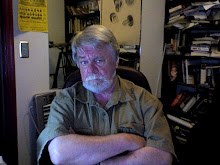
Russia raised the prospect of war in the Arctic yesterday as nations struggle for control of the world’s dwindling energy reserves.
The country’s new national security strategy identified the intensifying battle for ownership of vast untapped oil and gas fields around its borders as a source of potential military conflict within a decade.
“The presence and potential escalation of armed conflicts near Russia’s national borders, pending border agreements between Russia and several neighbouring nations, are the major threats to Russia’s interests and border security,” stated the document, which analysed security threats up to 2020.
“In a competition for resources it cannot be ruled out that military force could be used to resolve emerging problems that would destroy the balance of forces near the borders of Russia and her allies.”
The Kremlin has insisted that it is not “militarising the Arctic” but its warnings of armed conflict suggest that it is willing to defend its interests by force if necessary as global warming makes exploitation of the region’s energy riches more feasible.
The United States, Norway, Canada and Denmark are challenging Russia’s claim to a section of the Arctic shelf, the size of Western Europe, which is believed to contain billions of tonnes of oil and gas.
An earlier Kremlin document declared the Arctic a strategic resource for Russia and said that development of its energy reserves by 2020 was a vital national objective. It set out plans to establish army bases along the Arctic frontier to “guarantee military security in different military-political situations”.
The strategy published yesterday was approved by President Medvedev and drawn up by the Russian Security Council, which includes the Prime Minister, Vladimir Putin, and heads of the military and intelligence agencies.
Mr Putin accused the West last year of coveting Russian energy reserves, saying: “Many conflicts, foreign policy actions and diplomatic moves smell of oil and gas. Behind all that there often is a desire to enforce an unfair competition and ensure access to our resources.”
Nikolai Patrushev, who heads the Security Council, once flew to the North Pole to plant a Russian flag. He was in charge of the FSB, the federal security service, when Mr Putin was President and created a special Arctic Directorate in 2004 to advance Moscow’s interests in the region. Dmitri Rogozin, the Russian Ambassador to Nato, warned the military alliance in March not to meddle in the Arctic, saying that there was “nothing for them to do there”.
The Foreign Minister, Sergei Lavrov, also criticised Norway, a Nato member, over military exercises based on “a conflict over access to resources”. Norway responded that Russia was expanding its military presence in the region.
A team of explorers led by Artur Chilingarov, the Kremlin’s special representative to the region, used mini-submarines to plant a titanium flag on the Arctic seabed in 2007 to stake Russia’s claim to the massive Lomonosov Ridge.
Russia argues that the ridge is an extension of its territory, which justifies its ownership of 1.2 million sq km (465,000 square miles) of the Arctic. It plans to stake its claim in a submission to the United Nations Convention on the Law of the Sea.
The strategy document predicted that the struggle over energy resources would increasingly dominate international relations. It identified the Barents Sea and Central Asia, where Russia and China are vying for influence, as further areas of friction.
The Caspian Sea is critical to the European Union’s hopes of breaking its dependence on Russian gas by building export routes for alternative supplies from Central Asia. Russia, Kazakhstan, Azerbaijan, Turkmenistan and Iran are locked in talks on dividing the seabed and its energy riches.
The strategy paper also condemned as unacceptable threats to Russian securityAmerican plans for a missile defence shield in Eastern Europe and the expansion of Nato into the former Soviet republics of Ukraine and Georgia.
